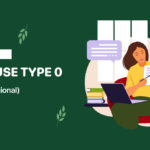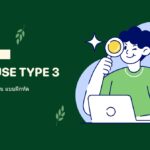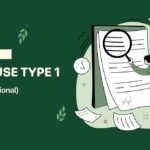คุณกำลังประสบปัญหาในการใช้ประโยคปฏิเสธ ภาษาอังกฤษหรือไม่? บทความนี้จะเป็นคู่มือที่มีประโยชน์สำหรับคุณ โดยให้ข้อมูลครบถ้วนเกี่ยวกับโครงสร้างประโยคปฏิเสธที่พบบ่อยที่สุดพร้อมแบบฝึกหัดใช้งานเพื่อช่วยให้คุณฝึกฝนได้อย่างมีประสิทธิภาพ มาค้นพบกันเลย!

I. ประโยคปฏิเสธ ภาษาอังกฤษคืออะไร?
ประโยคปฏิเสธ ภาษาอังกฤษใช้เพื่อแสดงความหมายที่ตรงกันข้ามกับประโยคยืนยัน แสดงถึงการไม่มี ไม่เกิดขึ้น หรือไม่เป็นความจริงของเหตุการณ์ใดเหตุการณ์หนึ่ง โครงสร้างประโยคปฏิเสธสร้างขึ้นโดยการใช้คำปฏิเสธ เช่น “not”, “no”, “never”, “none”, ร่วมกับองค์ประกอบอื่นๆ ในประโยค
ตัวอย่างใหม่:
- My brother does not play football. (พี่ชายของฉันไม่เล่นฟุตบอล)
- Emma is not interested in watching movies. (เอ็มม่าไม่สนใจดูหนัง)
- We will never ignore your requests. (เราจะไม่มีวันไม่สนใจคำขอของคุณ)
II. โครงสร้างของประโยคปฏิเสธ ภาษาอังกฤษ (Negative Sentences)
1. โครงสร้างของประโยคปฏิเสธใน 12 ช่วงเวลาของภาษาอังกฤษ
| Tense ทั้ง 12 | โครงสร้างประโยคปฏิเสธภาษาอังกฤษ | ตัวอย่าง |
| Present simple | กริยาปกติ: S + do/does + not + V-inf + (O)
Do not = don’t Does not = doesn’t <br> กริยา to be: S + am/ is/ are + not + (O) Is not = isn’t Are not = aren’t |
Jane doesn’t drink coffee. (เจนไม่ดื่มกาแฟ)
He isn’t a teacher. (เขาไม่ใช่ครู) |
| Present continuous tense | S + am/ is/ are + not + V-ing + (O) | They are not watching TV now. (พวกเขาไม่ได้ดูทีวีตอนนี้) |
| Present perfect tense | S + have/has + not + V3 + (O)
have not = haven’t has not = hasn’t |
Sarah hasn’t seen this movie yet. (ซาร่ายังไม่เคยดูหนังเรื่องนี้) |
| Present perfect continuous tense | S + have/ has + not + been + V-ing + (O) | Jack hasn’t been working here long. (แจ็คทำงานที่นี่ยังไม่นาน) |
| Past simple tense | กริยาปกติ: S + did not + V-inf + (O)
Did not = didn’t กริยา to be: S + was/ were + not + (O) Was not = wasn’t Were not = weren’t |
I didn’t go to the party. (ฉันไม่ได้ไปงานปาร์ตี้)
She was not happy about the news. (เธอไม่มีความสุขกับข่าวนี้) |
| Past continuous tense | S + was/were + not + V-ing + (O) | Tom was not sleeping when you called. (ทอมไม่ได้นอนตอนที่คุณโทรมา) |
| Past perfect tense | S + had not + V3 + (O)
Had not = hadn’t |
Laura hadn’t completed the assignment before the deadline. (ลอร่าไม่ได้ทำการบ้านเสร็จก่อนกำหนด) |
| Past perfect continuous tense | S + had not + been + V-ing + (O) | He hadn’t been living in Bangkok before he moved here. (เขาไม่ได้อยู่ในกรุงเทพก่อนที่จะย้ายมาที่นี่) |
| Simple future tense | S + will not + V-inf + (O) | I will not buy that car. (ฉันจะไม่ซื้อรถคันนั้น) |
| Future continuous tense | S + will not + be + V-ing + (O) | Tomorrow at this time, she will not be using the computer. (พรุ่งนี้เวลานี้ เธอจะไม่ใช้คอมพิวเตอร์) |
| Future perfect tense | S + will not + have + V3 + (O) | By next year, we will not have moved yet. (ถึงปีหน้า เราจะยังไม่ได้ย้าย) |
| Future perfect continuous tense | S + will not + have + been + V-ing + (O) | In five years, they will not have been living here for a decade. (ในอีกห้าปี พวกเขาจะยังไม่ได้อาศัยอยู่ที่นี่ครบทศวรรษ) |
2. โครงสร้างของประโยคปฏิเสธที่ใช้กับกริยาช่วย
มาเรียนรู้เกี่ยวกับประโยคเชิงลบภาษาอังกฤษที่มีคำกริยาช่วยพร้อมตัวอย่างประกอบ!
|
โครงสร้างประโยคปฏิเสธ ภาษาอังกฤษกับกริยาช่วย: S + modal verbs + not + V-inf (+ O) |
||
| กริยาช่วย | ตัวอย่าง | |
| ความสามารถ (Ability to do something) | can/ could/ be able to | Susan cannot come to the phone right now as she is in a meeting. (Susan ไม่สามารถมาตอบโทรศัพท์ได้ตอนนี้เพราะเธอกำลังประชุมอยู่) |
| คำแนะนำ (Advice) | must/ should/ ought to/ could | Lisa should not ignore her symptoms and visit a doctor. (Lisa ไม่ควรมองข้ามอาการของเธอและควรไปพบแพทย์) |
| ความจำเป็นและความต้องการ (Obligation and Necessity) | must/ have to/ need | You must not enter this area; it’s under construction. (คุณไม่ควรเข้าไปในบริเวณนี้; มันกำลังอยู่ในระหว่างการก่อสร้าง) |
| ความเป็นไปได้และความไม่แน่นอน (Certainty and possibility) | will/ would/ may/ might/ can/ could | He may not attend the meeting due to personal reasons. (เขาอาจไม่เข้าร่วมการประชุมเนื่องจากเหตุผลส่วนตัว) |
3. โครงสร้างของประโยคปฏิเสธด้วย “Any, anybody, anyone, anything, anywhere”
ในประโยคปฏิเสธภาษาอังกฤษ เราไม่ใช้ “not” ร่วมกับ “some, someone, somebody, something, somewhere” แต่จะใช้ “any, anyone, anybody, anything, anywhere” แทน ตัวอย่างประโยคปฏิเสธภาษาอังกฤษ:
- There aren’t some seats left. ➞ ❌
- There aren’t any seats left. Unfortunately you’ll have to stand. (ไม่มีที่นั่งเหลืออยู่เลย น่าเสียดายคุณต้องยืน) ➞ ✅
หลังจากกริยาที่มีความหมายเชิงปฏิเสธเช่น “decline/refuse”, เราจะใช้ “anything” แทน “something”
ตัวอย่าง: Tom refused to give me any details about the plan. (ทอมปฏิเสธที่จะให้รายละเอียดใดๆ เกี่ยวกับแผนการนี้)
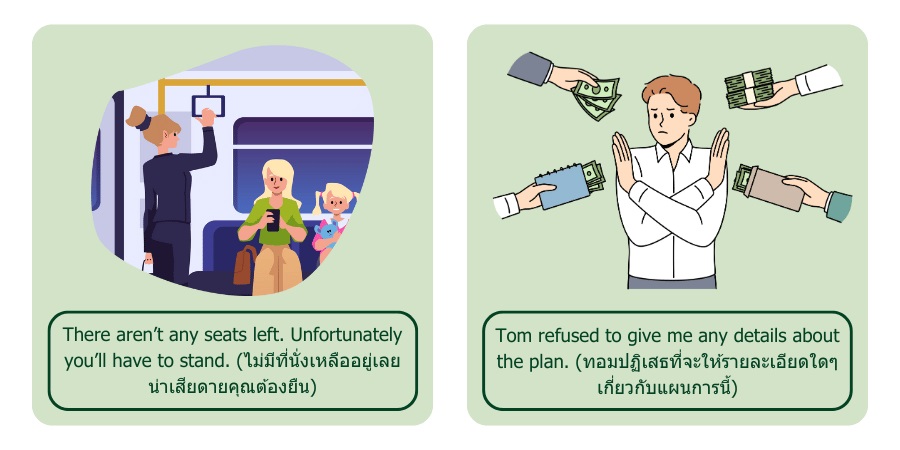
4. โครงสร้างของประโยคปฏิเสธด้วย “no, not, never, none, nobody”
เมื่อต้องการบอกว่าบางสิ่งไม่เป็นความจริง เราสามารถใช้คำ วลี หรือประโยคปฏิเสธเช่น “no, not, never, none, nobody” ตัวอย่างประโยคปฏิเสธภาษาอังกฤษ:
- My father has never visited Europe. (พ่อของฉันไม่เคยไปยุโรป)
- There were no messages on the phone this morning. (เช้านี้ไม่มีข้อความในโทรศัพท์)
- Nobody answered the door when I knocked. (ไม่มีใครตอบประตูเมื่อฉันเคาะ)
- None of the solutions worked. (ไม่มีวิธีแก้ไขใดทำงาน)
5. โครงสร้างของประโยคปฏิเสธด้วยคำวิเศษณ์ปฏิเสธ
เราใช้คำวิเศษณ์ปฏิเสธเช่น “hardly, little, never, only, scarcely และ seldom” ที่ต้นประโยคและเปลี่ยนลำดับของกริยามาก่อนประธาน ตัวอย่างประโยคปฏิเสธภาษาอังกฤษ:
- Hardly had Sandra walked out the door than the phone rang. (แซนดร้าเพิ่งเดินออกจากประตู เสียงโทรศัพท์ก็ดังขึ้น)
- Little did James realize that it was the last time they would speak. (เจมส์ไม่เคยคิดเลยว่านั่นจะเป็นครั้งสุดท้ายที่พวกเขาพูดกัน)
เรายังเปลี่ยนลำดับช่วงช่วยและประธานหลังจาก “Not + วลีเตรียม” หรือ “Not + ประโยคในตำแหน่ง” ตัวอย่างประโยคปฏิเสธภาษาอังกฤษ:
- Not until the concert started did Anna realize she left her tickets at home. (แอนนาจึงตระหนักว่าเธอทิ้งตั๋วไว้ที่บ้าน หลังจากที่คอนเสิร์ตเริ่มขึ้น)
- Not until the sun set did they decide to leave the beach. (พวกเขาตัดสินใจออกจากชายหาดหลังจากที่พระอาทิตย์ตกดิน)
6. โครงสร้างของประโยคปฏิเสธทวีคูณ
ในภาษาอังกฤษ เมื่อใช้ “nobody, nowhere, never หรือ nothing” เราจะไม่ใช้กริยาปฏิเสธ ตัวอย่างประโยคปฏิเสธภาษาอังกฤษ:
- Ella had nothing to add about the incident. (เอลลาไม่มีอะไรจะเพิ่มเติมเกี่ยวกับเหตุการณ์นั้น)
- At midnight, there was nobody at the station. (เที่ยงคืน, ไม่มีใครที่สถานี)
อย่างไรก็ตาม เราสามารถใช้ not + คุณศัพท์/คำวิเศษณ์ที่มีคำนำหน้าปฏิเสธเช่น un-, in- เป็นวิธีที่ทำให้คำศัพท์นั้นเป็นคำกลางหรือนุ่มนวลลง ซึ่งมักพบในเอกสารเขียนทางการ ตัวอย่างประโยคปฏิเสธภาษาอังกฤษ:
- The change in policy was not unexpected. (การเปลี่ยนแปลงนโยบายไม่ใช่เรื่องที่ไม่คาดคิด)
- The outcome was not insignificant. (ผลลัพธ์นั้นไม่ได้มีนัยสำคัญน้อย)
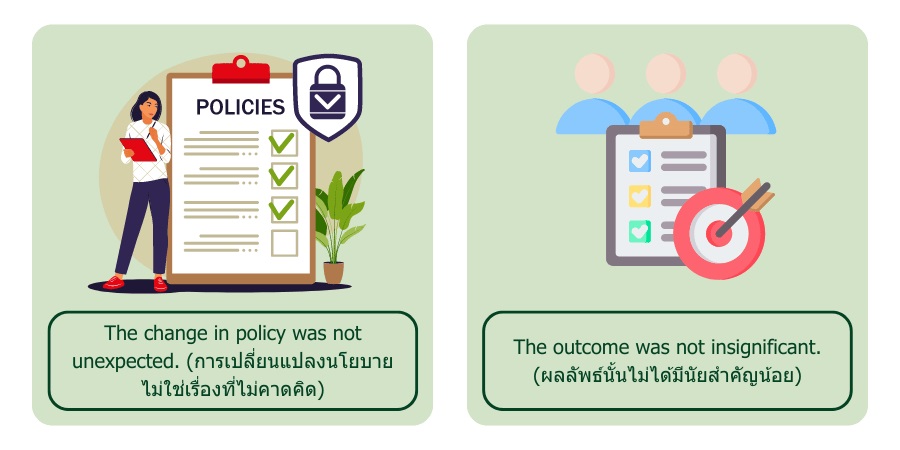
III. การบ้านประโยคปฏิเสธ ภาษาอังกฤษ (Negative Sentences)
แบบฝึกหัดที่ 1. เลือกคำตอบที่ถูกต้องเพื่อเติมประโยคต่อไปนี้:
- I ______ go to the cinema last night.
- A. did
- B. didn’t
- C. does
- D. doesn’t
- She ______ have a car.
- A. have
- B. has
- C. doesn’t have
- D. don’t have
- We ______ study English every day.
- A. do
- B. does
- C. am
- D. are
- They ______ like coffee.
- A. don’t like
- B. doesn’t like
- C. not like
- D. doesn’t likes
- He ______ come to the party yesterday.
- A. come
- B. comes
- C. didn’t come
- D. doesn’t come
แบบฝึกหัดที่ 2 เขียนประโยคต่อไปนี้ใหม่ให้อยู่ในรูปปฏิเสธ:
- I understand this lesson.
- My sister likes to cook.
- They will go to the beach tomorrow.
- She is a doctor.
- We have a dog.
| คำตอบ:
แบบฝึกหัดที่ 1. เลือกคำตอบที่ถูกต้อง:
แบบฝึกหัดที่ 2 เขียนประโยคใหม่ให้อยู่ในรูปแบบเชิงลบ:
|
หวังว่าความรู้ที่ theieltsclub แบ่งปันข้างต้นจะช่วยให้คุณเข้าใจความหมาย โครงสร้าง และการใช้คำแปลที่ประโยคปฏิเสธ ภาษาอังกฤษ หวังว่าบทความนี้ คุณจะได้เรียนรู้ความรู้ภาษาอังกฤษที่มีประโยชน์มากขึ้น


